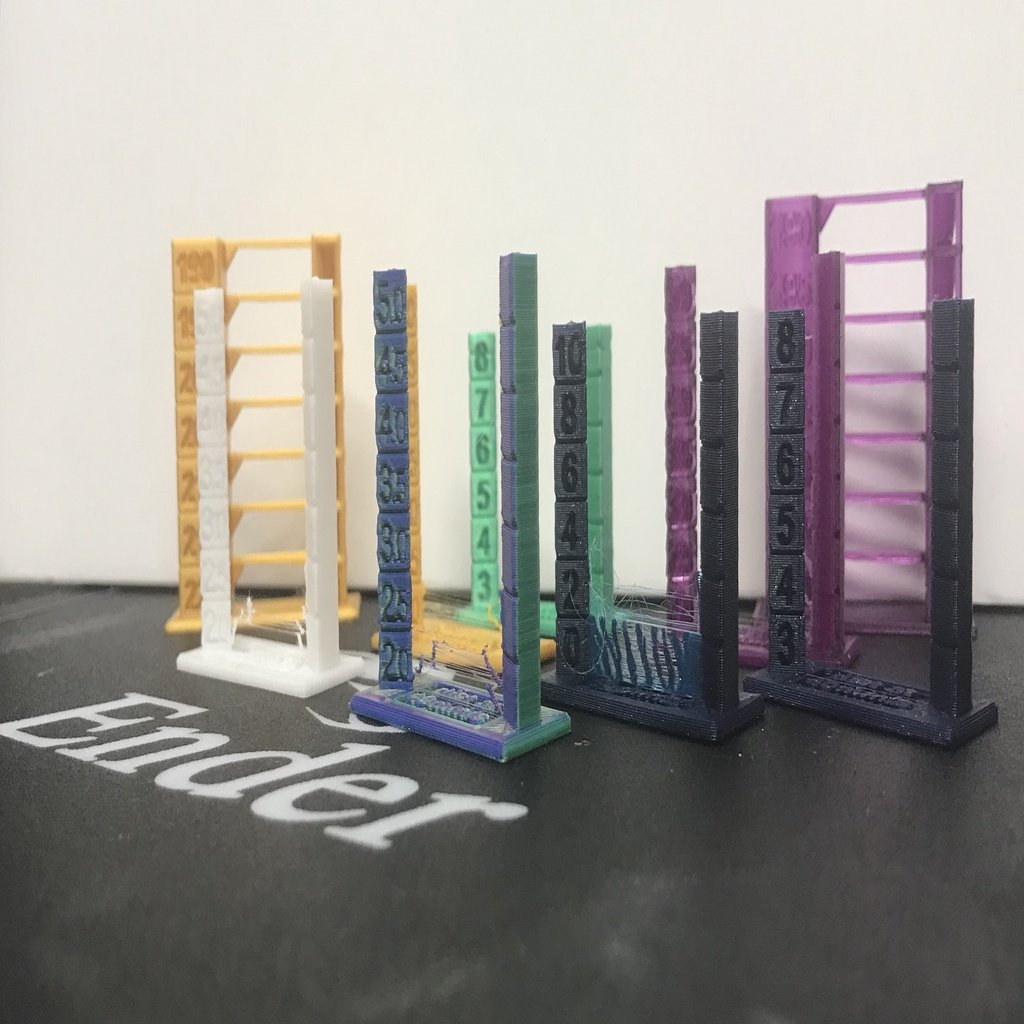
3D Retraction Test Suite
thingiverse
Important update 27-Jan-2020 I've uploaded corrected speed test files. The distance test files were (and are) fine. Do not use speed tests downloaded prior to today. There were miscalculations in the speed test files, and I temporarily removed them on 25-Jan-2020. All had incorrect speeds, and three had ridiculous retractions. I apologize for any problems this may have caused. The files here are the results of my efforts to create a comprehensive set to quickly determine best retraction distance and retraction speed for an FDM printer/filament combination. (I have a similar set of temperature tests elsewhere.) Each file consists of a base to ensure bed adhesion, and two slim pillars 20mm apart. The pillars are vertically divided into labelled 5mm sections to make it clear where parameters change. They are angular, partly to print faster, but mainly to ensure the travel moves start and end in the same places. Each takes about 20 minutes to print, not including time for preheating, homing, or auto bed-levelling (see note below), and uses just over 0.5m of filament. You'd normally start by choosing a likely retraction distance range and plausible retraction speed, and run one distance test. That may be sufficient, but you might perhaps refine that, and then perhaps run a retraction speed test. You should have previously calibrated your printers E steps, and ideally have run a temperature test for the filament you're testing. For each of the files to test retraction distances, one pillar is labelled with the retraction distances used for each section, and the base is labelled with the retraction speed used, which is the same for the whole file. For each of the files to test retraction speeds, one of the pillars is labelled with the retraction speed used for each section, and the base is labelled with the retraction distance used, which is the same for the whole file. ### Distance tests For Bowden tube extruders, there are distance files with distances from 0mm to 10mm retraction in 2mm steps, and for finer resolution, files with distances from 3mm to 8mm in 1mm steps. For direct extruders, or if you simply want finer resolution, there are distance files with distances from 0mm to 2.0mm retraction in 0.25/0.5mm steps, and 2.0mm to 5.0mm in 0.5mm steps. Each of those types is present with seven retraction speeds: 15mm/s, 20mm/s, 25mm/s, 30mm/s, 35mm/s, 40mm/s, and 50mm/s. ### Speed tests There are 14 speed-test files with retraction speeds from 15mm/s to 50mm/s, each file at a constant retraction distance: 0.25mm, 0.5mm, 0.75mm, 1.0mm, 1.5mm, 2.0mm, 2.5mm, 3.0mm, 4mm, 5mm, 6mm, 7mm, 8mm, and 10mm. ### Built-in settings Each file was sliced in Cura 4.3.0 at 200C hotend temperature and 50C bed temperature (to suit most PLA), a line width of 0.42mm (to suit a 0.4mm nozzle), a layer height of 0.2mm, and travel speed of 150mm/s. The temperatures are set near the beginning of the file and can be easily changed with a text editor: look for the lines like M104 S200, which set the hotend temperature to 200C using G-Codes M104 and M109 (M104 just sets the target temperature without waiting; M109 sets it but waits until it has reached that temperature). Similar lines set the bed temperature. NB Each file has a "G29" line, which performs auto bed levelling. If you don't have ABL enabled in your firmware, your printer might simply ignore that, but you can just delete that line if you're unsure.
With this file you will be able to print 3D Retraction Test Suite with your 3D printer. Click on the button and save the file on your computer to work, edit or customize your design. You can also find more 3D designs for printers on 3D Retraction Test Suite.
